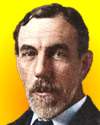
On 2 Oct 1937, films of moving X-ray images showing movement of organs of the human body were displayed at the American Roentgen Ray Society convention in New York City. Moving X-ray images on a fluorescent screen were captured with a 16-mm home movie camera. The doctors that made the films had reported their technique at the previous year's convention in 1936. You can read more about how the films were made in this article on X-ray Movies.

On 2 Oct 1852, Sir William Ramsay was born, discoverer of the noble gases. Today's book pick is: The Noble Gases (Science & Discovery Series), by Asimov, a very readable gem of information on these almost inert gases. Did you know that a supply of one of these inert gases comes out of the ground from gas wells, mixed in with the natural gas, and the supply will run out like a fossil fuel? Meanwhile, that noble gas has been stockpiled as a strategic reserve. Asimov is always engaging. Your webmaster greatly enjoyed learning much from this book, heartily recommends it, and rates it a “don't miss!” This is a book every chemist, student and teacher should read. Long out of print, it can still be grabbed as a used copy.
It is available from Amazon, typically about Used from $11.08. (As of earlier time of writing - subject to change.)
 | I cannot give any scientist of any age better advice than this: the intensity of the conviction that a hypothesis is true has no bearing on whether it is true or not. The importance of the strength of our conviction is only to provide a proportionally strong incentive to find out if the hypothesis will stand up to critical examination. |
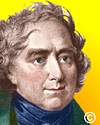 | Connaître, découvrir, communiquer—telle est, au fond, notre honorable destinée. To get to know, to discover, to publish—this is the destiny of a scientist. |
 | One of the earliest questions asked by an intelligent child is: “What is this made of?” “What is that made of?” And the answer is generally more or less satisfactory. For example, if the question relates to butter, the reply may be, “From cream.” It may be explained, besides, that when cream is beaten up, or churned, the butter separates, leaving skim-milk behind. But the question has not been answered. The child may ask, “Was the butter in the milk before it was churned? or has it been made out of the milk by the churning?” Possibly the person to whom the question is addressed may know that the milk contained the butter in the state of fine globules, and that the process of churning breaks up the globules, and causes them to stick together. The original question has not really been answered; and indeed it is not an easy one to reply to. Precisely such questions suggested themselves to the people of old, and they led to many speculations. |
| Before you look at today's web page, see if you can answer some of these questions about the events that happened on this day. Some of the names are very familiar. Others will likely stump you. Tickle your curiosity with these questions, then check your answers on today's web page. | |
| Births | |
 | Sir William Ramsay, born 2 Oct 1852, was a Scottish chemist who discovered three so-called “inert gases” and co-discovered a fourth. He was the Nobel laureate of 1904 “in recognition of his services in the discovery of the inert gaseous elements in air, and his determination of their place in the periodic system.” Can you name the four “inert gases” referred to above? |
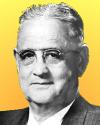 | On 2 Oct 1901, Charles Stark Draper was born, an American aeronautical engineer, who designed navigational and guidance systems for ships, airplanes, and missiles from World War II through the Cold War. He incorporated a device that stabilized and balanced gunsights and bombsights. Use of this device was later expanded to an inertial guidance system for launching long-range missiles. What device did Draper built into gunsights, bombsights and missiles? |
| Deaths | |
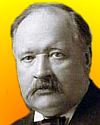 | Svante Arrhenius (1859-1927) was a physical chemist best known for his theory that electrolytes, certain substances that dissolve in water to yield a solution that conducts electricity, are separated, or dissociated, into electrically charged particles, or ions, even when there is no current flowing through the solution. What was his nationality? |
 | Nicolas-Joseph Cugnot (1725-1804) was a French military engineer who invented the world's first fuel-propelled vehicle, a gun tractor commissioned by the French government. The following year he produced the first mechanically driven “horseless carriage.” What form of power propelled the Cugnot vehicles? |
| Events | |
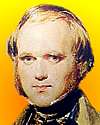 | On 2 Oct 1836, Charles Darwin returned from his voyage on the HMS Beagle to the Pacific which led to the publication of his book, Origin of Species. How many years passed between this return and the book's publication? |
 | On 2 Oct of a certain year, the Atomicron, the first atomic clock, was unveiled at the Overseas Press Club in New York City. What was the decade in which this atomic clock was thus displayed? |
Fast answers for the previous newsletter for October 1: from biology; the splitting of a cell • Jimmy Carter • Homo habilis • Aegean • decade containing the year 1969 • $825 • a comet.
 If you enjoy this newsletter, the website, or wish to offer encouragement or ideas, please send feedback by using your mail reader Reply button.
If you enjoy this newsletter, the website, or wish to offer encouragement or ideas, please send feedback by using your mail reader Reply button. Your click on a Facebook, StumbleUpon, or other social button on the site webpages is also a welcome sign of appreciation. Thank you for using them.
© This newsletter is copyright 2020 by todayinsci.com. Please respect the Webmaster's wishes and do not put copies online of the Newsletter — or any Today in Science History webpage. (If you already have done so, please remove them. Thank you.) Offline use in education is encouraged such as a printout on a bulletin board, or projected for classroom viewing. Online, descriptive links to our pages are welcomed, as these will provide a reader with the most recent revisions, additions and/or corrections of a webpage. For any other copyright questions, please contact the Webmaster by using your mail reader Reply button.
--
If you do not want to receive any more newsletters, Unsubscribe
To update your preferences and to unsubscribe visit this link
Executive Real Estate Business Class
-
"It was like a man with wings. It wasn't like anything you'd see on TV or in a monster movie." ...
About the publisher
Search This Blog
Blog Archive
-
▼
2020
(1542)
-
▼
October
(171)
- The Compass: Iceland
- A Very Special Halloween Edition Of Our Scariest S...
- On This Day for October 31 - Luther's Ninety-five ...
- Newsletter for Saturday 31 October.
- CORONAVIRUS UPDATE: Why some people are supersprea...
- October 31: Martin Luther Challenges the Pope, Mic...
- PHOTOGRAPHY: Capturing America's pent-up energy to...
- The Terrifying Story Of The Mothman, The Little-Kn...
- The Roundup Top Ten from History News Network
- On This Day for October 30 - Henry Tudor crowned k...
- Newsletter for Friday 30 October.
- October 30: Tsar Nicholas II 'October Manifesto', ...
- ANIMALS: Will oil drilling spread across spectacul...
- On This Day for October 29 - Collapse of U.S. stoc...
- Newsletter for Thursday 29 October.
- October 29: End of China's One-Child Policy and Lo...
- YOUR WEEKLY ESCAPE: The science of the heebie-jeebies
- SCIENCE: Will every hurricane season be like this?
- The Latest News from History News Network
- On This Day for October 28 - Statue of Liberty ded...
- Newsletter for Wednesday 28 October.
- October 28: Fingerprints, Prohibition and the Blac...
- TRAVEL: When do Americans say they’ll fly again?
- Were vampire hunters real? Subscribe to find out.
- On This Day for October 27 - Anwar Sadat and Menac...
- Newsletter for Tuesday 27 October.
- October 27: China's Population Reaches 1 Billion a...
- HISTORY: Rush of early voters spurs talk of a record
- New This Week on History News Network
- On This Day for October 26 - Park Chung Hee assass...
- Newsletter for Monday 26 October.
- October 26: Beginning of the Red Cross and the Gun...
- FAMILY: When the best advice to your kids isn't yours
- On This Day for October 25 - English triumph at Ag...
- Newsletter for Sunday 25 October.
- October 25: The Great United Nations China Switch ...
- The Compass: Japan
- On This Day for October 24 - United Nations establ...
- Newsletter for Saturday 24 October.
- October 24: Two Great Historical Stock Market Crashes
- CORONAVIRUS UPDATE: How to fight the COVID-19 'inf...
- PHOTOGRAPHY: The best photojournalism of the decade
- What did Cleopatra look like? | Charles and Diana’...
- 11 Spooky Urban Legends Based On Terrifying True S...
- The Roundup Top Ten for October 23, 2020
- On This Day for October 23 - U.S. and French troop...
- Newsletter for Friday 23 October.
- October 23: US National Debt, an Old Fossil and th...
- ANIMALS: They were researching cheetahs. Iran call...
- Love the show Weird But True? Get more WBT with ev...
- Early Holiday Savings at the HISTORY Store
- Introducing the Britannica All New Kids' Encyclope...
- On This Day for October 22 - Cuban missile crisis,...
- Newsletter for Thursday 22 October.
- YOUR WEEKLY ESCAPE: These prehistoric footprints t...
- October 22: Greenwich Mean Time, the Cuban Missile...
- SCIENCE: Will the next generation fight a pandemic...
- On This Day for October 21 - Magellan's discovery ...
- The Latest News from History News Network
- October 21: Battle of Trafalgar, China Occupies Ti...
- TRAVEL: We found 50 stories in 50 states for ‘Amer...
- On This Day for October 20 - Opening of Sydney Ope...
- Newsletter for Tuesday 20 October.
- October 20: On This Day in History
- HISTORY: Why do we have the Electoral College?
- Join photographer Pete Muller for an online conver...
- New This Week on History News Network
- On This Day for October 19 - Surrender of Lord Cor...
- Newsletter for Monday 19 October.
- October 19: On This Day in History
- FAMILY: Letting kids take charge
- The lost heirs of Henry VIII
- On This Day for October 18 - Alaska Purchase appro...
- Newsletter for Sunday 18 October.
- October 18: French Protestants, The Alaska Purchas...
- The Compass: Portugal
- On This Day for October 17 - Mother Teresa awarded...
- Newsletter for Saturday 17 October.
- October 17: Burma Railway, OPEC Oil Embargo and Ra...
- CORONAVIRUS UPDATE: Who will be first in line for ...
- PHOTOGRAPHY: How COVID-19 changed our work
- The 25 Best Horror Movies Of All Time — And The Ch...
- This Week's Roundup Top Ten from History News Network
- On This Day for October 16 - Marie-Antoinette guil...
- Newsletter for Friday 16 October.
- October 16: Battle of Leipzig, Mao's Long March an...
- ANIMALS: The wildlife photo of the year
- Challenge grant: Help unlock important funds for w...
- On This Day for October 15 - Final conference on A...
- Newsletter for Thursday 15 October.
- October 15: Napoleon's Exile, the 1st Oral Contrac...
- YOUR WEEKLY ESCAPE: A murder mystery 430,000 years...
- SCIENCE: Will the next generation fight a pandemic...
- The Latest News on History News Network
- On This Day for October 14 - Battle of Hastings, D...
- Newsletter for Wednesday 14 October.
- Historic Trends in our time may be overcome with g...
- October 14: William the Conqueror, Robert the Bruc...
- The Embarrassing Final Moments Of 10 Revered Histo...
- TRAVEL: Does your wine taste like fire?
-
▼
October
(171)
-
Blogroll
-
About
HistoryFact










0 comments:
Post a Comment